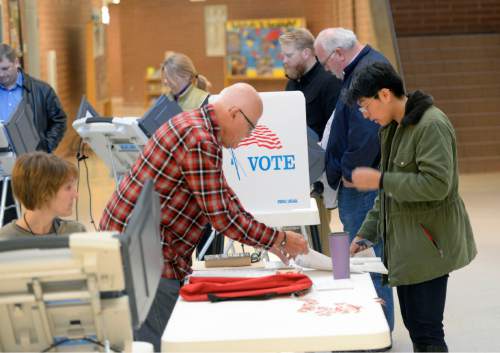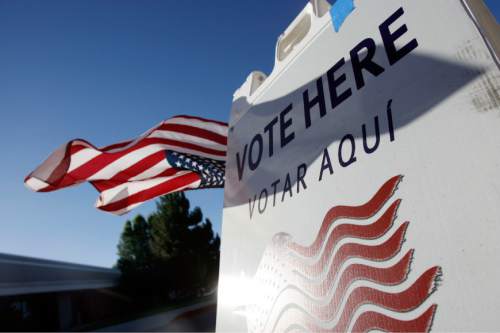This is an archived article that was published on sltrib.com in 2015, and information in the article may be outdated. It is provided only for personal research purposes and may not be reprinted.
State lawmakers are looking at changing the way primaries are conducted to ensure a party's nominee wins a majority of support from voters.
Worries about candidates clinching nominations with less than 50 percent of the primary vote arose out of the changes enacted last year under SB54, which allows hopefuls to get on the primary ballot by gathering signatures, rather than going through a party convention.
Rep. Marc Roberts, R-Santaquin, said he is concerned that with more people on a primary ballot, a candidate could win the nomination without the backing of a majority of the voters.
"I for one am uncomfortable with a nominee having less than 50 percent," Roberts said. "If we represent our districts and we're a representative form of government, I would think we would want at least 50 percent of the people voting for us for office."
Lawmakers are examining three proposals, each with advantages and drawbacks:
• A runoff between the top two primary candidates to ensure someone gets above the 50 percent threshold.
• Preferential voting, meaning voters would rank candidates from their favorite to least favorite. Then, as the lowest vote getters are dropped off the list, the votes would accrue to the remaining candidates;
• Letting party delegates, chosen at neighborhood caucuses, decide the winner between the top two primary vote-getters.
Runoffs, however, are costly — up to $3 million for a statewide race — and there are problems staging an election and complying with deadlines in federal law for military voters.
In addition, the state's electronic-voting machines are unable to accommodate preferential balloting, and it would cost millions to replace them.
Senate Budget Chairman Lyle Hillyard, R-Logan, said if he had to tell voters they had to spend $20 million to $30 million for new voting machines that get used only twice a year, "I might get run out of office."
The state plans to upgrade their machines by 2020, said Mark Thomas, Utah's elections director, but currently only one vendor has software that accommodates preferential balloting.
And the option of letting delegates pick the nominee if there isn't a clear primary winner would further disenfranchise already-disillusioned voters, said Jenn Gonnelly, co-president of the League of Women Voters of Utah.
"If we ask the citizens of our state to go out to the polls … for a primary and then set aside those results and send it back to the party," she warned, "We will add to the disenfranchisement we hear across the state. 'I cast my vote and nobody cared.' "
Some questioned if a nominee getting less than 50 percent is even a problem. Only 14 of the 50 states have laws requiring a majority vote.
"We're discussing solutions to a problem, and I'm not convinced it is a problem," said Rep. Merrill Nelson, R-Grantsville. "We've had governors and presidents and vice presidents elected with a plurality, and it's something we've lived with and it's worked. … In my view it's not a problem."
In 2012, then-Rep. Jim Matheson won the general election over Mia Love with less than 50 percent of the vote. And Gov. Mike Leavitt won a three-way race for the state's top executive with a plurality of the vote.
Legislators are expected to continue studying the issue through the summer and propose solutions by the next legislative session, which convenes in January 2016.
gehrke@sltrib.com Twitter: @RobertGehrke Options for ensuring a majority vote
State lawmakers are looking at options that would ensure a primary election winner emerges with a majority of party support:
Method What it would do Obstacles
Runoff election Top two primary vote-getters face off Cost, logistics and
legal requirements
Preferential voting Voters rank candidates; low vote-getters Cost; only one vendor
drop off and their votes accrue to has software to handle
remaining field such voting
Delegate decision Delegates choose winner between top Voters further
two vote-getters disenfranchised









